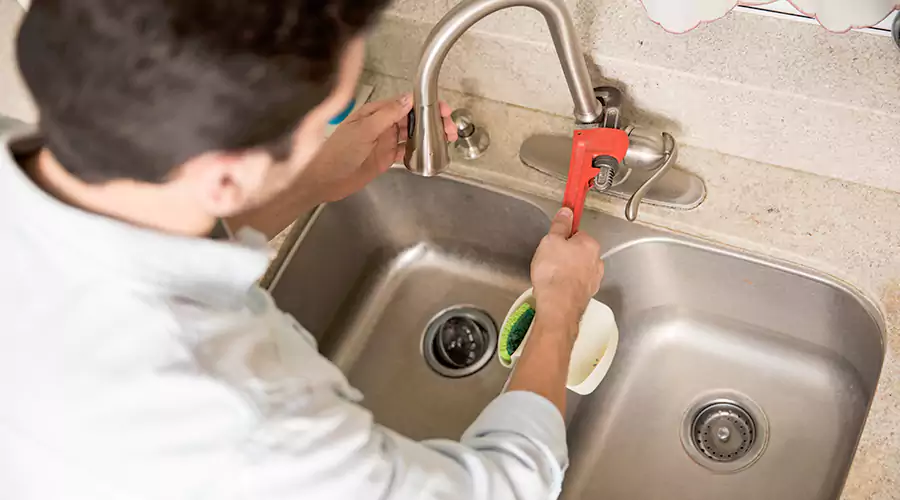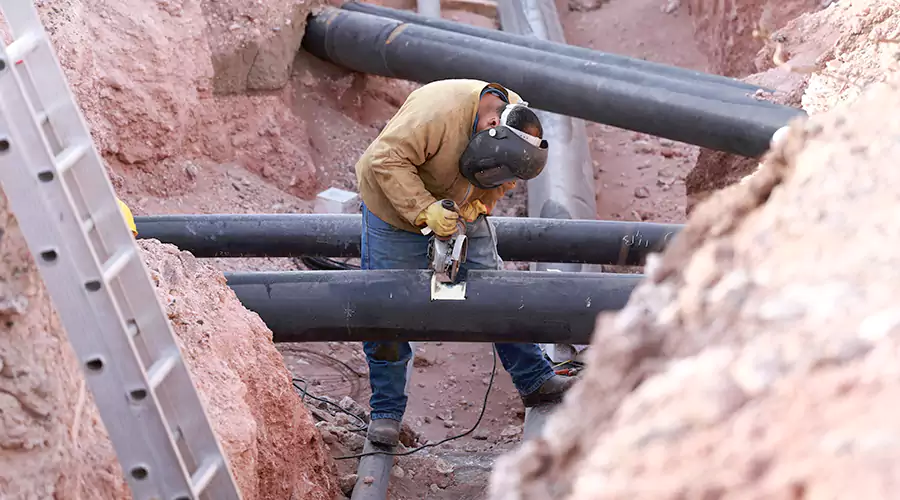A backed-up kitchen sink is one of the most frustrating plumbing problems for any homeowner. It can leave dirty water standing in your sink, emit unpleasant odors, and disrupt your daily routine. While clogs and backups are common, understanding what causes them — and how to prevent or fix them — can save you from costly plumbing repairs later.
In this guide, we’ll cover the main causes of kitchen sink backups, practical prevention tips, and quick solutions to get your sink draining smoothly again.
1. What Causes Kitchen Sink Backups
Most kitchen sink backups occur because of gradual buildup inside your drainpipes. Over time, food debris, grease, and soap scum accumulate, restricting water flow and eventually blocking it completely.
Common causes include:
- Grease and oil buildup: When fats and cooking oils cool, they harden and stick to pipe walls.
- Food scraps: Coffee grounds, rice, pasta, and fibrous foods like celery can easily clog drains.
- Soap and detergent residue: These can form a sticky film that traps other debris.
- Foreign objects: Utensils, small dish items, or non-food waste can slip down the drain accidentally.
- Faulty or old plumbing: Corroded or misaligned pipes can catch debris and slow drainage.
- Garbage disposal issues: Overloading or improper use of the disposal can lead to jams and blockages.
2. Warning Signs of a Developing Clog
Kitchen sink clogs often develop gradually. Spotting early warning signs can help you act before the water stops draining altogether.
Watch for:
- Water draining slower than usual
- Gurgling noises coming from the drain
- Foul odors rising from the sink or disposal
- Standing water that takes minutes to clear after use
- Bubbles or backup in one sink when the other is draining (in double-bowl sinks)
When these signs appear, it’s time to take action before a full backup occurs.
3. Quick DIY Fixes for Minor Backups
a. Hot Water Flush
Pour a pot of boiling water down the drain to melt grease and dislodge small blockages. Follow with warm water for several minutes.
b. Baking Soda and Vinegar
This natural cleaning combo helps break down buildup:
- Pour ½ cup of baking soda down the drain.
- Follow with 1 cup of white vinegar.
- Wait 15–20 minutes, then flush with hot water.
c. Plunger
A sink plunger (not the same as a toilet plunger) can create suction to clear minor clogs.
- Seal the drain opening and plunge up and down firmly for 20–30 seconds.
- Rinse with warm water to check drainage.
d. Garbage Disposal Reset
If your disposal is jammed, turn it off, check for debris inside, and press the reset button underneath the unit. Never reach inside while it’s connected to power.
4. When DIY Fixes Don’t Work
If your sink remains clogged after trying basic fixes, the problem may be deeper in your plumbing system. Avoid using harsh chemical drain cleaners — they can corrode pipes and damage your disposal.
Instead, call a professional plumber who can:
- Use specialized tools like a drain auger or hydro jet to remove tough clogs
- Inspect pipes with a drain camera to identify buildup or structural issues
- Check for problems in the main sewer line if multiple drains are affected
Prompt professional service can prevent major plumbing damage and restore full drainage quickly.
5. Preventing Future Kitchen Sink Backups
Prevention is always better than cure. Here’s how to keep your kitchen drains clear and healthy:
Do’s
- Use sink strainers: Catch food scraps and debris before they enter the drain.
- Run hot water: After washing dishes, run hot water for 30 seconds to flush residue.
- Grind food slowly: If using a garbage disposal, feed food gradually while running cold water.
- Clean your disposal regularly: Use ice cubes, citrus peels, and baking soda to keep blades sharp and odor-free.
Dont's
- Don’t pour grease, fats, or oils down the drain.
- Don’t put starchy foods like potatoes, rice, or pasta into the disposal.
- Don’t flush coffee grounds or eggshells into the sink.
- Don’t overload your garbage disposal — let it rest between uses.
Consistent care and good habits will help prevent clogs before they form.
6. Professional Drain Cleaning and Maintenance
Even with proper care, buildup can still occur over time. Regular professional drain cleaning keeps your plumbing system in top shape. Plumbers use tools like hydro jetting, which clears pipes using high-pressure water, safely removing years of grease and debris without chemicals.
Scheduling a drain inspection once a year ensures your pipes stay clear and helps catch minor issues early, avoiding costly repairs later.
Conclusion
Kitchen sink backups are messy, inconvenient, and often preventable. By understanding the causes, acting early on warning signs, and maintaining good habits, you can keep your kitchen drains running smoothly all year.
If you’re facing a stubborn clog or recurring backups, contact a professional Drain Cleaning and Plumbing Repair specialist. With expert tools and experience, they can quickly restore proper drainage and help you prevent future problems — saving you time, stress, and money in the long run.
 Reviews
Reviews



